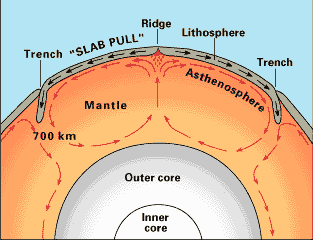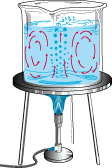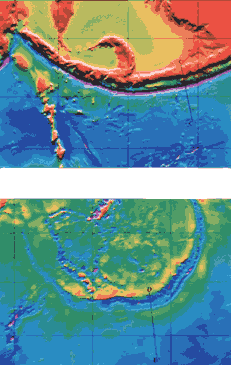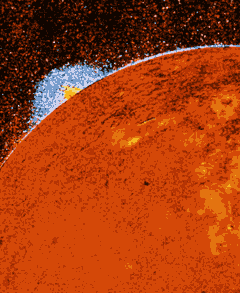5: Some Unanswered Questions
- Page ID
- 216
\( \newcommand{\vecs}[1]{\overset { \scriptstyle \rightharpoonup} {\mathbf{#1}} } \)
\( \newcommand{\vecd}[1]{\overset{-\!-\!\rightharpoonup}{\vphantom{a}\smash {#1}}} \)
\( \newcommand{\dsum}{\displaystyle\sum\limits} \)
\( \newcommand{\dint}{\displaystyle\int\limits} \)
\( \newcommand{\dlim}{\displaystyle\lim\limits} \)
\( \newcommand{\id}{\mathrm{id}}\) \( \newcommand{\Span}{\mathrm{span}}\)
( \newcommand{\kernel}{\mathrm{null}\,}\) \( \newcommand{\range}{\mathrm{range}\,}\)
\( \newcommand{\RealPart}{\mathrm{Re}}\) \( \newcommand{\ImaginaryPart}{\mathrm{Im}}\)
\( \newcommand{\Argument}{\mathrm{Arg}}\) \( \newcommand{\norm}[1]{\| #1 \|}\)
\( \newcommand{\inner}[2]{\langle #1, #2 \rangle}\)
\( \newcommand{\Span}{\mathrm{span}}\)
\( \newcommand{\id}{\mathrm{id}}\)
\( \newcommand{\Span}{\mathrm{span}}\)
\( \newcommand{\kernel}{\mathrm{null}\,}\)
\( \newcommand{\range}{\mathrm{range}\,}\)
\( \newcommand{\RealPart}{\mathrm{Re}}\)
\( \newcommand{\ImaginaryPart}{\mathrm{Im}}\)
\( \newcommand{\Argument}{\mathrm{Arg}}\)
\( \newcommand{\norm}[1]{\| #1 \|}\)
\( \newcommand{\inner}[2]{\langle #1, #2 \rangle}\)
\( \newcommand{\Span}{\mathrm{span}}\) \( \newcommand{\AA}{\unicode[.8,0]{x212B}}\)
\( \newcommand{\vectorA}[1]{\vec{#1}} % arrow\)
\( \newcommand{\vectorAt}[1]{\vec{\text{#1}}} % arrow\)
\( \newcommand{\vectorB}[1]{\overset { \scriptstyle \rightharpoonup} {\mathbf{#1}} } \)
\( \newcommand{\vectorC}[1]{\textbf{#1}} \)
\( \newcommand{\vectorD}[1]{\overrightarrow{#1}} \)
\( \newcommand{\vectorDt}[1]{\overrightarrow{\text{#1}}} \)
\( \newcommand{\vectE}[1]{\overset{-\!-\!\rightharpoonup}{\vphantom{a}\smash{\mathbf {#1}}}} \)
\( \newcommand{\vecs}[1]{\overset { \scriptstyle \rightharpoonup} {\mathbf{#1}} } \)
\( \newcommand{\vecd}[1]{\overset{-\!-\!\rightharpoonup}{\vphantom{a}\smash {#1}}} \)
\(\newcommand{\avec}{\mathbf a}\) \(\newcommand{\bvec}{\mathbf b}\) \(\newcommand{\cvec}{\mathbf c}\) \(\newcommand{\dvec}{\mathbf d}\) \(\newcommand{\dtil}{\widetilde{\mathbf d}}\) \(\newcommand{\evec}{\mathbf e}\) \(\newcommand{\fvec}{\mathbf f}\) \(\newcommand{\nvec}{\mathbf n}\) \(\newcommand{\pvec}{\mathbf p}\) \(\newcommand{\qvec}{\mathbf q}\) \(\newcommand{\svec}{\mathbf s}\) \(\newcommand{\tvec}{\mathbf t}\) \(\newcommand{\uvec}{\mathbf u}\) \(\newcommand{\vvec}{\mathbf v}\) \(\newcommand{\wvec}{\mathbf w}\) \(\newcommand{\xvec}{\mathbf x}\) \(\newcommand{\yvec}{\mathbf y}\) \(\newcommand{\zvec}{\mathbf z}\) \(\newcommand{\rvec}{\mathbf r}\) \(\newcommand{\mvec}{\mathbf m}\) \(\newcommand{\zerovec}{\mathbf 0}\) \(\newcommand{\onevec}{\mathbf 1}\) \(\newcommand{\real}{\mathbb R}\) \(\newcommand{\twovec}[2]{\left[\begin{array}{r}#1 \\ #2 \end{array}\right]}\) \(\newcommand{\ctwovec}[2]{\left[\begin{array}{c}#1 \\ #2 \end{array}\right]}\) \(\newcommand{\threevec}[3]{\left[\begin{array}{r}#1 \\ #2 \\ #3 \end{array}\right]}\) \(\newcommand{\cthreevec}[3]{\left[\begin{array}{c}#1 \\ #2 \\ #3 \end{array}\right]}\) \(\newcommand{\fourvec}[4]{\left[\begin{array}{r}#1 \\ #2 \\ #3 \\ #4 \end{array}\right]}\) \(\newcommand{\cfourvec}[4]{\left[\begin{array}{c}#1 \\ #2 \\ #3 \\ #4 \end{array}\right]}\) \(\newcommand{\fivevec}[5]{\left[\begin{array}{r}#1 \\ #2 \\ #3 \\ #4 \\ #5 \\ \end{array}\right]}\) \(\newcommand{\cfivevec}[5]{\left[\begin{array}{c}#1 \\ #2 \\ #3 \\ #4 \\ #5 \\ \end{array}\right]}\) \(\newcommand{\mattwo}[4]{\left[\begin{array}{rr}#1 \amp #2 \\ #3 \amp #4 \\ \end{array}\right]}\) \(\newcommand{\laspan}[1]{\text{Span}\{#1\}}\) \(\newcommand{\bcal}{\cal B}\) \(\newcommand{\ccal}{\cal C}\) \(\newcommand{\scal}{\cal S}\) \(\newcommand{\wcal}{\cal W}\) \(\newcommand{\ecal}{\cal E}\) \(\newcommand{\coords}[2]{\left\{#1\right\}_{#2}}\) \(\newcommand{\gray}[1]{\color{gray}{#1}}\) \(\newcommand{\lgray}[1]{\color{lightgray}{#1}}\) \(\newcommand{\rank}{\operatorname{rank}}\) \(\newcommand{\row}{\text{Row}}\) \(\newcommand{\col}{\text{Col}}\) \(\renewcommand{\row}{\text{Row}}\) \(\newcommand{\nul}{\text{Nul}}\) \(\newcommand{\var}{\text{Var}}\) \(\newcommand{\corr}{\text{corr}}\) \(\newcommand{\len}[1]{\left|#1\right|}\) \(\newcommand{\bbar}{\overline{\bvec}}\) \(\newcommand{\bhat}{\widehat{\bvec}}\) \(\newcommand{\bperp}{\bvec^\perp}\) \(\newcommand{\xhat}{\widehat{\xvec}}\) \(\newcommand{\vhat}{\widehat{\vvec}}\) \(\newcommand{\uhat}{\widehat{\uvec}}\) \(\newcommand{\what}{\widehat{\wvec}}\) \(\newcommand{\Sighat}{\widehat{\Sigma}}\) \(\newcommand{\lt}{<}\) \(\newcommand{\gt}{>}\) \(\newcommand{\amp}{&}\) \(\definecolor{fillinmathshade}{gray}{0.9}\)The tectonic plates do not randomly drift or wander about the Earth's surface; they are driven by definite yet unseen forces. Although scientists can neither precisely describe nor fully understand the forces, most believe that the relatively shallow forces driving the lithospheric plates are coupled with forces originating much deeper in the Earth.
What drives the plates?
From seismic and other geophysical evidence and laboratory experiments, scientists generally agree with Harry Hess' theory that the plate-driving force is the slow movement of hot, softened mantle that lies below the rigid plates. This idea was first considered in the 1930s by Arthur Holmes, the English geologist who later influenced Harry Hess' thinking about seafloor spreading. Holmes speculated that the circular motion of the mantle carried the continents along in much the same way as a conveyor belt. However, at the time that Wegener proposed his theory of continental drift, most scientists still believed the Earth was a solid, motionless body. We now know better. As J. Tuzo Wilson eloquently stated in 1968, "The earth, instead of appearing as an inert statue, is a living, mobile thing." Both the Earth's surface and its interior are in motion. Below the lithospheric plates, at some depth the mantle is partially molten and can flow, albeit slowly, in response to steady forces applied for long periods of time. Just as a solid metal like steel, when exposed to heat and pressure, can be softened and take different shapes, so too can solid rock in the mantle when subjected to heat and pressure in the Earth's interior over millions of years.

Left: Conceptual drawing of assumed convection cells in the mantle (see text). Below a depth of about 700 km, the descending slab begins to soften and flow, losing its form. Below: Sketch showing convection cells commonly seen in boiling water or soup. This analogy, however, does not take into account the huge differences in the size and the flow rates of these cells.

The mobile rock beneath the rigid plates is believed to be moving in a circular manner somewhat like a pot of thick soup when heated to boiling. The heated soup rises to the surface, spreads and begins to cool, and then sinks back to the bottom of the pot where it is reheated and rises again. This cycle is repeated over and over to generate what scientists call a convection cell or convective flow. While convective flow can be observed easily in a pot of boiling soup, the idea of such a process stirring up the Earth's interior is much more difficult to grasp. While we know that convective motion in the Earth is much, much slower than that of boiling soup, many unanswered questions remain: How many convection cells exist? Where and how do they originate? What is their structure?
Convection cannot take place without a source of heat. Heat within the Earth comes from two main sources: radioactive decay and residual heat. Radioactive decay, a spontaneous process that is the basis of "isotopic clocks" used to date rocks, involves the loss of particles from the nucleus of an isotope (the parent) to form an isotope of a new element (the daughter). The radioactive decay of naturally occurring chemical elements -- most notably uranium, thorium, and potassium -- releases energy in the form of heat, which slowly migrates toward the Earth's surface. Residual heat is gravitational energy left over from the formation of the Earth -- 4.6 billion years ago -- by the "falling together" and compression of cosmic debris. How and why the escape of interior heat becomes concentrated in certain regions to form convection cells remains a mystery.
Until the 1990s, prevailing explanations about what drives plate tectonics have emphasized mantle convection, and most earth scientists believed that seafloor spreading was the primary mechanism. Cold, denser material convects downward and hotter, lighter material rises because of gravity; this movement of material is an essential part of convection. In addition to the convective forces, some geologists argue that the intrusion of magma into the spreading ridge provides an additional force (called "ridge push") to propel and maintain plate movement. Thus, subduction processes are considered to be secondary, a logical but largely passive consequence of seafloor spreading. In recent years however, the tide has turned. Most scientists now favor the notion that forces associated with subduction are more important than seafloor spreading. Professor Seiya Uyeda (Tokai University, Japan), a world-renowned expert in plate tectonics, concluded in his keynote address at a major scientific conference on subduction processes in June 1994 that "subduction . . . plays a more fundamental role than seafloor spreading in shaping the earth's surface features" and "running the plate tectonic machinery." The gravity-controlled sinking of a cold, denser oceanic slab into the subduction zone (called "slab pull") -- dragging the rest of the plate along with it -- is now considered to be the driving force of plate tectonics.
We know that forces at work deep within the Earth's interior drive plate motion, but we may never fully understand the details. At present, none of the proposed mechanisms can explain all the facets of plate movement; because these forces are buried so deeply, no mechanism can be tested directly and proven beyond reasonable doubt. The fact that the tectonic plates have moved in the past and are still moving today is beyond dispute, but the details of why and how they move will continue to challenge scientists far into the future.
Extraterrestrial plate tectonics?
The Earth may be unique in our solar system because it appears to be the only planet that is still volcanically and tectonically active; our planet therefore remains very much alive, while the others apparently have long ceased activity. Volcanic activity requires a source of internal heat, and it is the escape of this heat that fuels plate tectonics. While volcanism played a major role in the early history of Mars, the Moon, and probably Mercury, their small sizes relative to Earth resulted in the loss of internal heat at a much faster rate. They have been inactive globes for the last billion years or so.
Venus may still be active, though the evidence is questionable. In 1979, the Pioneer-Venus spacecraft measured a high amount of sulfur in the upper atmosphere of the planet; the sulfur amount then decreased over the next few years. This observation suggested that the high sulfur concentration measured in 1979 may have resulted from a catastrophic event, perhaps a volcanic eruption. Beginning in 1990, radar images made by the Magellan spacecraft revealed dramatic volcanic features and long, deep valleys similar in size and shape to oceanic trenches on Earth.

Left: A computer-generated image of the Aleutian Trench (in violet); "warm" colors (yellow to red) indicate topographic highs, and "cool" colors (green to blue) represent lower elevations. Below: The topography of Artemis Corona, a trench-like feature on Venus, shown at the same vertical and horizontal scale as the Aleutian Trench. (Imagery courtesy of David T. Sandwell, Scripps Institution of Oceanography.)
The Voyager spacecraft discovered several volcanic plumes rising many hundreds of kilometers above the surface of Io, one of the moons of Jupiter and about the size of our Moon. Scientists speculate that large pools of liquid sulfur may exist on Io, possibly heated by tidal forces resulting from gravitational attraction between Io and Jupiter. The thermal energy generated by such tidal forces may be enough to produce convection in Io's interior, although no one has clearly recognized any surface feature that may have formed from such convection.
The surface of Ganymede, another moon of Jupiter and about the size of Mercury, is broken into many plate-like blocks, with long narrow depressions between some of them. Whether these surface features represent ancient "fossil" plate tectonics, or are actively forming, remains to be answered. Crucial to determining whether plate tectonics is occurring on Ganymede is the search for evidence of a deep ocean beneath its icy surface. Such a body of water, if it exists, might contribute to internal convection.

A volcanic plume of sulfur dioxide (SO2) gas rising about 150 km above the surface of Io. This computer-enhanced image was captured "live" by the Voyager 2 spacecraft on 4 March 1979. (Imagery courtesy of NASA.)
he rate of heat loss is critical to a planet's tectonic activity. Size is one determining factor: larger bodies lose heat more slowly and will therefore remain active longer. Another factor is composition, which influences the ability of a body to convect. For example, a liquid interior, such as may exist within Ganymede, is more likely to convect and drive plate tectonics than the "stony" interiors of the Moon, Mercury, Venus, and Mars. The amount of radioactive elements present in the planet's composition also affects the likelihood of internal convection, because the decay of these elements produces heat. Apparently, the interiors of the Moon, Mercury, and Mars are either too rigid or have lost too much of their internal heat to convect and drive plate tectonics.
Eventually the Earth, too, will lose so much heat that its interior will stop convecting. Earthquake and volcanic activity will then cease. No new mountains will form, and the geologic cycle of mountain building, erosion, sedimentation, and soil formation will be disrupted and also will cease. Exactly how a cooled-down Earth will change surface conditions -- and whether our planet will still be habitable -- nobody knows. Fortunately, these changes will not happen for many billions of years!
Contributors and Attributions
W. Jacquelyne Kious and Robert Tilling ("The Dynamic Earth" via the U.S. Geological Survey)


